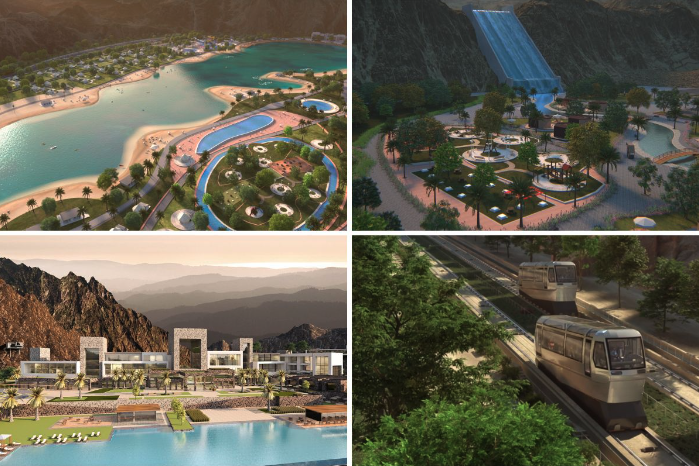Sheikh Mohammed approved Phase 2 of the Hatta development plan that will bring a major tourism boost to Dubai mountain region
Tourism in Hatta will get a boost after Sheikh Mohammed bin Rashid Al Maktoum, Vice President and Prime Minister of the UAE and Ruler of Dubai, approved the next stage of the mountain region’s development plan.
Sheikh Mohammed reviewed progress of Phase 1 of Hatta Development Projects and Initiatives.
He also approved Phase 2 of the development. This features 22 new projects and initiatives, which are set to commence this year.
Hatta development Phase 2
One of the key objectives of the strategic projects is to transform Hatta Beach into an all-season tourist spot that caters to residents and visitors alike.
The waterfront of the Hatta Beach features a variety of recreational amenities, services, and activities that cater to the diverse demands of visitors. These facilities are expected to boost the number of tourists and visitors to the region.
The Hatta Waterfalls will be constructed in the vicinity of Hatta Dam. The site will also see the installation of a 5.4 km cable car that will carry visitors from the dam to the top of Umm Al Nusour, the highest peak in Dubai.
The projects also include a mountain tramway to improve accessibility to Hatta Dam, as well a stand at the Hatta Dam to ensure safe transportation of visitors to the area.
Hotels and health resorts featuring an urban design aligned with the area’s natural setting will also be constructed. These facilities will cater to all segments of society and promote tourism across Hatta.
A variety of new projects and initiatives are planned for implementation, such as the restoration of Wadi Lim Lake, and the installation of seasonal kiosks, food carts, facilities, walkways, and rest areas aimed at enhancing investment opportunities and promoting tourism in the area.
A new model residential district is being designed in addition to constructing 100 national houses as part of the development.
Hiking tracks will be introduced in select mountainous regions to facilitate leisure and sporting activities.
Additionally, a Hatta service centre will be established to cater to the varied requirements of the community. Furthermore, efforts will be made to feature Hatta’s archaeological sites, such as the Hatta tombs dating back to the Bronze and Iron Ages, as well as the Falaj Al Shari’a in Hatta, in the UNESCO World Heritage list.
Sheikh Mohammed was received at the Hatta Souq by Mattar Al Tayer, Commissioner-General of Infrastructure, Urban Planning and Wellbeing Pillar and Chairman of the Supreme Committee Overseeing the Development of Hatta.
The souq combines modern and traditional elements that blend in with the mountainous nature of the region. Natural resources obtained from the Hatta mountains were used to build the souq to ensure harmony with its surroundings.
The souq, which spans 146,000sq ft, has a built area of more than 43,000sq ft. It encompasses seven shops, six indoor and seven outdoor kiosks, 42 sales platforms, a large store, eight food carts, a children’s playground, outdoor seating and green spaces, prayer rooms for men and women, and public facilities.
The souq enables residents to display their craft products, agricultural produce, and commercial projects.
The Hatta Development Project has completed 14 projects and is presently engaged in the implementation of four more projects as per the approved timetable.
The completed projects include the development of a master plan for the Hatta region, which comprises a strategic framework and a detailed implementation plan for a package of projects and initiatives aimed at supporting the region’s development.
The completed projects include an urban design guide for construction in Hatta’s unique mountainous landscape, apart from the Hatta Souq and Hatta Heritage Village, which aim to highlight the area’s rich culture, history, and customs and enhance the cultural and historical profile of the region.
The integrated services provided to both residents and visitors aim to further enhance their overall experience of the attractions. The Heritage Village is expected to benefit approximately 40 citizen families.
An 11.5 km track dedicated to cycles and mountain bikes was constructed in the initial phase, along with several quick traffic solutions aimed at improving road conditions and parking facilities in key tourist sites.
Completed projects also included the provision of public and shared mobility solutions, such as e-hailing and shared rental services, in partnership with private entities as well as the construction of bus shelters and mobility hubs, parking facilities and a transportation hub.
A SME Hub was set up to support entrepreneurship and youth projects. The facility seeks to assist small and medium-sized business owners and encourage the youth of the region to realise their entrepreneurial aspirations.
Phase 1 included planting more than 13,000 native trees across the region, including residential areas, cycling tracks, and roads.
Phase 1 also saw the launch of a programme to support local farmers, and offer them guidance and resources such as fertilisers, seeds, and seedlings. A tourist farm was also established to provide a distinctive experience for visitors.
The initiatives implemented also comprised educational institutions in the region, diverse service facilities, and several events and programmes to support agricultural, cultural, tourism, and sporting activities.
SOURCE & CREDITS : arabianbusiness.com

